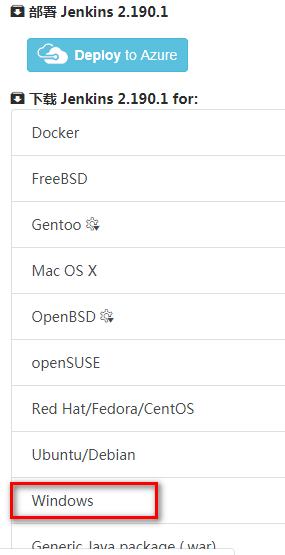python简单验证码识别的实现方法
利用SVM向量机进行4位数字验证码识别
主要是思路和步骤如下:
一,素材收集
检查环境是否包含有相应的库:
1.在cmd中,通过 pip list命令查看安装的库
2.再使用pip installRequests 安装Requests库
3.再次使用pip list 命令
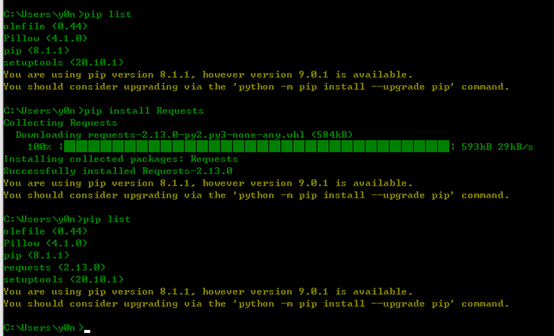
4.利用python获取验证码资源
编写代码:_DownloadPic.py
#!/usr/bin/nev python3
#利用python从站点下载验证码图片
import requests
## 1.在 http://www.xxx.com
# 获取验证码URL
def Downloads_Pic(strPath, strName):
#设置url
url = 'http://www.xxx.com'
#以二进制方式发送Get请求,
#将stream = True,
#数据读取完成前不要断开链接
rReq = requests.get(url, stream = True)
#尝试保存图片
with open(strPath + strName + '.png', 'wb') as fpPic:
#循环读取1024Byte到byChunk中,读完则跳出
for byChunk in rReq.iter_content(chunk_size = 1024):
if byChunk:
fpPic.write(byChunk)
fpPic.flush()
fpPic.close()
for i in range(1, 10 + 1):
strFileName = "%03d" % i
Downloads_Pic('D:/1/', strFileName)
二,素材处理
1.二值化处理,增加对比度,锐化,增加亮度,滤镜,转为黑白
2.去除噪点
3.切割图片
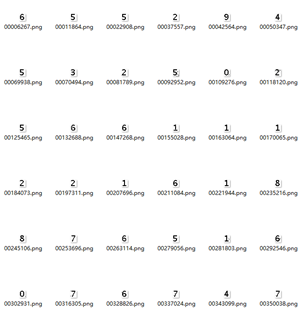
编写代码:_PicDealWith.py
#!/usr/bin/env python3
import os
import os.path
from PIL import Image, ImageEnhance, ImageFilter
import random
#二值化处理
#strImgPath 图片路径
def BinaryzationImg(strImgPath):
#打开图片
imgOriImg = Image.open(strImgPath)
#增加对比度
pocEnhance = ImageEnhance.Contrast(imgOriImg)
#增加255%对比度
imgOriImg = pocEnhance.enhance(2.55)
#锐化
pocEnhance = ImageEnhance.Sharpness(imgOriImg)
#锐化200%
imgOriImg = pocEnhance.enhance(2.0)
#增加亮度
pocEnhance = ImageEnhance.Brightness(imgOriImg)
#增加200%
imgOriImg = pocEnhance.enhance(2.0)
#添加滤镜效果
imgGryImg = imgOriImg.convert('L').filter(ImageFilter.DETAIL)
#二值化处理
imgBinImg = imgGryImg.convert('1')
return imgBinImg
#去除噪点
def ClearNoise(imgBinImg):
for x in range(1, (imgBinImg.size[0]-1)):
for y in range(1,(imgBinImg.size[1] - 1)):
#一个点为黑色,周围8个点为白色,则此点为噪点,设置为白色
if imgBinImg.getpixel((x, y)) == 0 \
and imgBinImg.getpixel(((x - 1), (y + 1))) == 255 \
and imgBinImg.getpixel(((x - 1), y)) == 255 \
and imgBinImg.getpixel(((x - 1), (y - 1))) == 255 \
and imgBinImg.getpixel(((x + 1), (y + 1))) == 255 \
and imgBinImg.getpixel(((x + 1), y)) == 255 \
and imgBinImg.getpixel(((x + 1), (y - 1))) == 255 \
and imgBinImg.getpixel((x, (y + 1))) == 255 \
and imgBinImg.getpixel((x, (y - 1))) == 255:
imgBinImg.putpixel([x, y], 255)
return imgBinImg
#切割图片
def GetCropImgs(imgClrImg):
ImgList = []
for i in range(4):
x = 6 + i * 13
y = 3
SubImg = imgClrImg.crop((x, y, x + 13, y + 15))
ImgList.append(SubImg)
return ImgList
#调用部分
def main():
g_Count = 0
strStep1Dir = 'D:/1/step1/'
strStep2Dir = 'D:/1/step2/'
for ParentPath, DirName, FileNames in os.walk(strStep1Dir):
for i in FileNames:
#图片文件路径信息
strFullPath = os.path.join(ParentPath, i)
imgBinImg = BinaryzationImg(strFullPath)
imgClrImg = ClearNoise(imgBinImg)
ImgList = GetCropImgs(imgClrImg)
for img in ImgList:
strImgName = "%04d%04d.png" % (g_Count, random.randint(0, 9999))
strImgPath = os.path.join(strStep2Dir, strImgName)
img.save(strImgPath)
g_Count += 1
print("OK!")
if __name__ == '__mian__':
main()
三,手工分类
将第二步切割好的图片进行分类,体力活
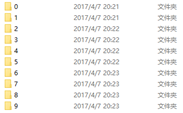
四,利用SVM向量机建立模型
1.安装svm库
下载libsvm库,并解压
将库中的windows目录的路径添加到path环境变量中
将libsvm下的python文件夹中的svm.py和svmutil.py文件拷贝到你的python的路径中lib文件夹中
from svmutil import *
2.生成模型文件
2.1.将分好类的图片信息进行提取,生成特征值
2.2.输出向量数据
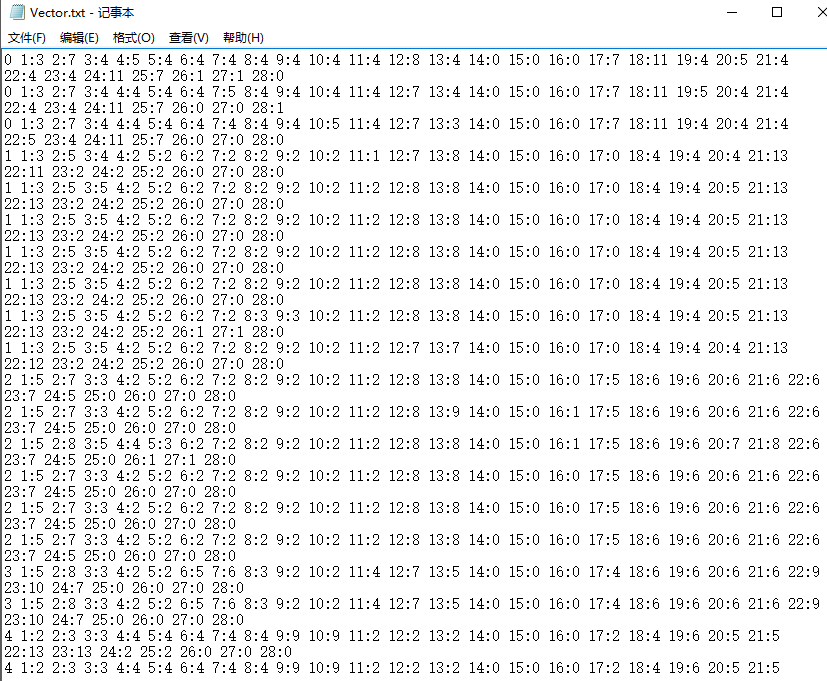
2.3.根据数据输出SVM模型文件
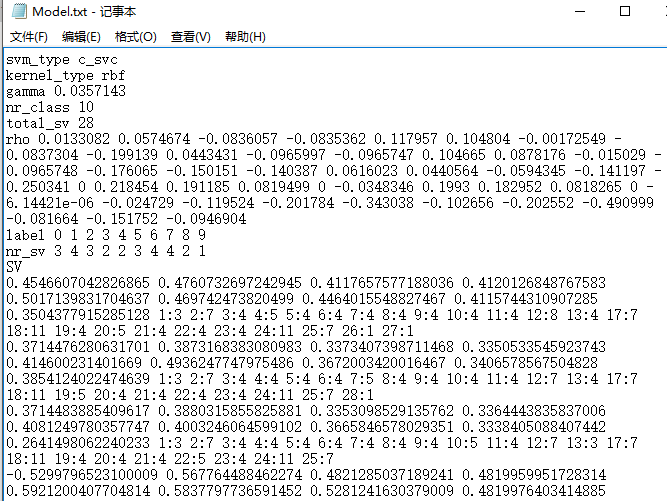
编写代码:_SVMDemo.py
#!/usr/bin/env python3
#SVM,验证码识别
import os
import sys
import random
import os.path
from PIL import Image, ImageEnhance, ImageFilter
from svmutil import *
##记录像素点的值,描述特征,采用遍历每个像素点统计黑色点的数量
def GetFeature(imgCropImg, nImgHeight, nImgWidth):
PixelCountList = []
for y in range(nImgHeight):
CountX = 0
for x in range(nImgWidth):
if imgCropImg.getpixel((x, y)) == 0:
CountX += 1
PixelCountList.append(CountX)
for x in range(nImgWidth):
CountY = 0
for y in range(nImgHeight):
if imgCropImg.getpixel((x, y)) == 0:
CountY += 1
PixelCountList.append(CountY)
return PixelCountList
##输出向量数据
def OutPutVectorData(strID, strMaterialDir, strOutPath):
for ParentPath, DirNames, FileNames in os.walk(strMaterialDir):
with open(strOutPath, 'a') as fpFea:
for fp in FileNames:
#图片文件路径信息
strFullPath = os.path.join(ParentPath, fp)
#打开图片
imgOriImg = Image.open(strFullPath)
#生成特征值
FeatureList = GetFeature(imgOriImg, 15, 13)
strFeature = strID + ' '
nCount = 1
for i in FeatureList:
strFeature = '%s%d:%d ' % (strFeature, nCount, i)
nCount += 1
fpFea.write(strFeature + '\n')
fpFea.flush()
fpFea.close()
#训练SVM模型
def TrainSvmModel(strProblemPath, strModelPath):
Y, X = svm_read_problem(strProblemPath)
Model = svm_train(Y, X)
svm_save_model(strModelPath, Model)
#SVM模型测试
def SvmModelTest(strProblemPath, strModelPath):
TestY, TestX = svm_read_problem(strProblemPath)
Model = svm_load_model(strModelPath)
#返回识别结果
pLabel, pAcc, pVal = svm_predict(TestY, TestX, Model)
return pLabel
##输出测试向量数据
def OutPutTestVectorData(strID, strDir, strOutPath):
fileList = []
for parentPath, strDir, fileName in os.walk(strDir):
fileList = fileName
with open(strOutPath, 'a') as fpFea:
for fp in fileList:
#图片文件路径信息
strFullPath = os.path.join(parentPath, fp)
#打开图片
imgOriImg = Image.open(strFullPath)
#生成特征值
FeatureList = GetFeature(imgOriImg, 15, 13)
strFeature = strID + ' '
nCount = 1
for i in FeatureList:
strFeature = '%s%d:%d ' % (strFeature, nCount, i)
nCount += 1
fpFea.write(strFeature + '\n')
fpFea.flush()
fpFea.close()
def main():
# 1.循环输出向量文件
for i in range(0, 10):
strID = '%d' % i
OutPutVectorData(strID, 'D:/1/step3/' + strID, 'D:/1/step4/Vector.txt')
# 2.调用函数训练SVM模型
TrainSvmModel('D:/1/step4/Vector.txt', 'D:/1/step5/Model.txt')
# 3.调用函数识别结果
pLabel = SvmModelTest('D:/1/step6/Vector.txt', 'D:/1/step5/Model.txt')
for i in pLabel:
print('%d' % i)
if __name__ == '__main__':
main()
五,测试
1.利用模型文件和向量文件进行测试验证码识别
##1.获取一张验证码图片
##2.对图片进行处理
## 2.1.二值化处理,增加对比度,锐化,增加亮度,滤镜,转为黑白,
## 2.2.去除噪点
## 2.3.切割图片
##3.生成向量文件
##4.再利用之前的模型文件进行识别测试
编写代码:_SVMTest.py
#!/usr/bin/env python3
#对一张验证码图片进行识别测试
##1.获取一张验证码图片
##2.对图片进行处理
## 2.1.二值化处理,增加对比度,锐化,增加亮度,滤镜,转为黑白,
## 2.2.去除噪点
## 2.3.切割图片
##3.生成向量文件
##4.再利用之前的模型文件进行识别测试
################
import _PicDealWith
import os
import random
import _SVMDemo
##测试
g_Count = 0
strDirPath = 'D:/1/test/'
strFileName = '001.png'
#1.图片文件路径信息
strFullPath = os.path.join(strDirPath, strFileName)
#2.对图片进行处理
#2.1二值化处理
imgBinImg = _PicDealWith.BinaryzationImg(strFullPath)
#2.2去除噪点
imgClrImg = _PicDealWith.ClearNoise(imgBinImg)
#2.3切割图片
ImgList = _PicDealWith.GetCropImgs(imgClrImg)
#2.3循环写入文件
for img in ImgList:
strImgName = "%04d%04d.png" % (g_Count, random.randint(0, 9999))
strImgPath = os.path.join(strDirPath, strImgName)
img.save(strImgPath)
g_Count += 1
print("OK")
os.remove(strFullPath)
#3.生成向量文件
_SVMDemo.OutPutTestVectorData('0', 'D:/1/test/', 'D:/1/test/Vector.txt')
#4.利用之前的模型文件进行识别测试
pLabel = _SVMDemo.SvmModelTest('D:/1/test/Vector.txt', 'D:/1/step5/Model.txt')
for i in pLabel:
print('%d' % i, end = '')
效果图:

总结
以上就是这篇文章的全部内容了,希望本文的内容对大家的学习或者工作具有一定的参考学习价值,谢谢大家对【听图阁-专注于Python设计】的支持。
